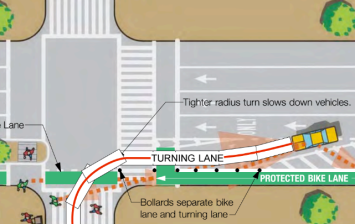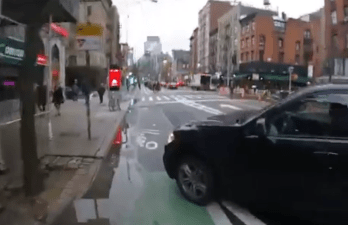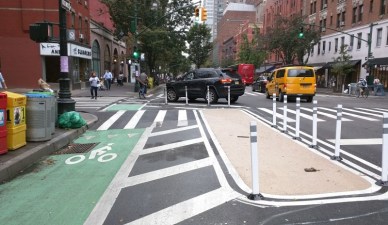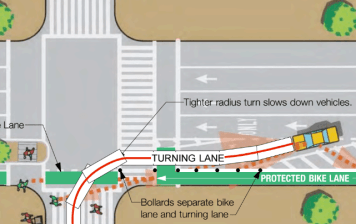DOT Tests Out New Intersection Design for Protected Bike Lanes
At Columbus Avenue and 70th Street, the agency has replaced a "mixing zone" with a new design that should reduce conflicts between passing cyclists and turning drivers.
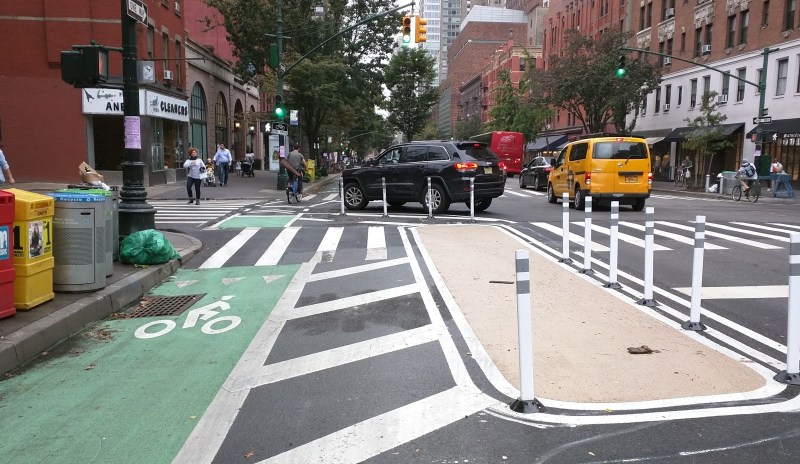
DOT is starting to test out bikeway intersection designs that could replace the “mixing zone” treatment the agency has favored for the past several years.
In a mixing zone, drivers turning across the bike lane approach from an angle where they have to look at mirrors or over the shoulder for passing cyclists. In the new design, drivers crossing the bike lane turn at a tighter angle that slows their approach and positions them to see passing cyclists through the front windshield.
A tipster sent in the above photo showing the new design at Columbus Avenue and 70th Street. The mixing zone has been replaced with a painted pedestrian island that redirects the path of turning motorists.
Intersections with mixing zones have a higher rate of cyclist injuries than intersections where cyclists and turning drivers each have a separate signal phase.
After a turning box truck driver killed Kelly Hurley as she biked through the mixing zone on First Avenue at 9th Street, DOT said it would test out different intersection designs along protected bicycle lanes.

Since the spring, volunteers with Transportation Alternatives have been pitching Manhattan community boards on an intersection design concept from architect Reed Rubey that calls for plastic bollards to create more separation for cyclists and slow approaching drivers in the turn lane. Six Manhattan community boards have called on DOT to adopt the concept.
The design that DOT is testing on Columbus Avenue goes a bit further and eliminates the turn lane altogether, adding the pedestrian island for separation instead. There’s also an area painted green where cyclists can stop on the far side of the crosswalk during a red light to establish themselves in turning drivers’ field of vision.
In addition to Columbus and 70th, sources have spotted this new intersection design at Amsterdam Avenue and 85th Street, Ninth Avenue and 38th Street, and Fourth Avenue and 13th Street.
If you see one, snap a photo and send it to tips@streetsblog.org.
